Salt and Sanctuary is a game that gives “Souls-like” a whole new meaning. Ska Studios, the developers behind Charlie Murder, took their time with this hand-drawn 2D Platformer, and it shows. Between the grim art within the level design and the punishing combat system, it’s hard to choose which aspect I’ve enjoyed more.
Salt and Sanctuary seamlessly combines fast, brutal, and complex 2D combat with richly developed RPG mechanics. Discover, craft, and upgrade over 600 weapons, armor pieces, spells, and items as you explore a cursed realm of forgotten cities, blood-soaked dungeons, desecrated monuments, and the fallen lords they once celebrated.
As a lover of the Souls series, I enjoy when games get dark and brutal. The art that Salt and Sanctuary brings to the table is robust in that nature. You’re cast into a grievous world as soon as the game begins and quickly unveil the grimacing villains within it. Each area has its own art style that goes hand in hand with its boss, and its not unclear where they’ve gotten their inspiration from.
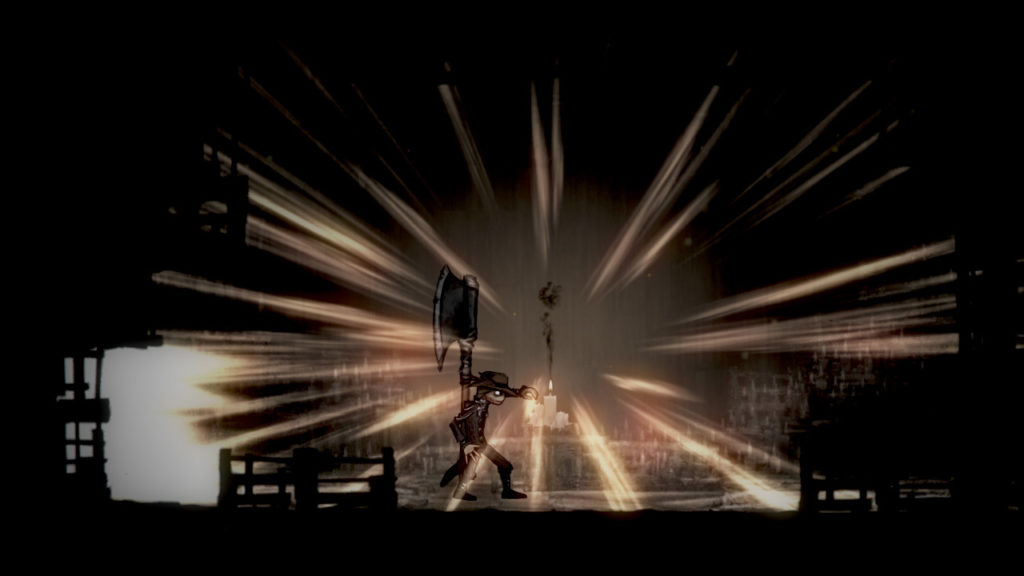
The combat system brings every aspect you want in a hardcore game. Salt and Sanctuary utilizes a similar concept, giving you a Grade A brew for a challenging game. The combat system gets down to detail: Weapon Stat Scaling, Equipment Load Percentage, and different Defense types are all implemented. Fat rolling at 70% was a surprise upon first starting out the game. Soon after, you learn the ability of Parrying and Riposte.
Salt and Sanctuary couldn’t hide its inspiration from Dark Souls just as Dark Souls can’t hide its influence from Berserk. Truth is, Salt and Sanctuary‘s homage works so well its almost unfathomable. I’ve barely scratched the surface with Salt and Sanctuary’s progression and depth. During my playthroughs, I found myself itching to push on to the next area after every boss battle. Unfortunately, the local co-op didn’t get enough use at all. Playing with a friend changes most all battle strategies and creates those moments of chaotic fun we all know and love.
This game is great, there’s no denying it. I felt bad enjoying the game so much and trying to find faults in it! Though the music a bit lackluster and simplistic, it still worked! You have to give credit where its due, especially when a two person studio puts every element into a platformer properly. You can’t even complain about the price tag with this much content.
Hands down, Salt and Sanctuary is the most fun and challenging platformer I’ve explored yet. Get it now on PS4, Steam, or Nintendo Switch!
Want more out from the underground?
The fastest way to hear more from us is to support our efforts by donating or get monthly perks by becoming a patron on Patreon!
Got an idea for a future debate? Let us know what you want to hear by joining our Discord server!
Follow us on Facebook or tweet to us @SubCultured using the hashtag #MasterDebaters!
Join us on our Twitch channel every Monday, Wednesday, and Friday at 9PM CST!
Subscribe to our YouTube channel!
Of the three games I’ve been given the opportunity to review in the past two weeks, Downward Spiral: Horus Station was last on the list for one very particular reason: Looks. But, as I’ve learned, beautiful games can be terrible (Star Wars: Battle Front, anyone?), and even the most coarse of games can be incredible. Despite my initial bias, I opened my mind, and my heart, to Downward Spiral: Horus Station.
From developer 3rd Eye Studios, Downward Spiral: Horus Station is an innovative and seamless VR experience.
Taking players through an abandoned vessel, the game focuses on visual storytelling for single player or two player online co-op. Using their wits, players will have to piece together the mystery based on observation and interaction all while accompanied by the electronic ambient soundtrack composed by platinum selling HIM frontman, Ville Valo.
For the first few hours with this game, my time was spent try to get the hang of the two separate game modes, as Downward Spiral: Horus Station plays in both a VR mode and Normal mode. It needs to be said again, that without a doubt, this game absolutely needs to be played in VR. The attention to detail in a deep space setting is entrancingly realistic, and just like movement in a zero gravity environment, the player is expected to grab handrails or shove yourself off walls to propel your body across a room.

On the opposite end, Normal mode makes the game almost impossible to play. Even after turning mouse sensitivity up to maximum, the look speed is too slow to react to threats, look around naturally, and the max is about 15 degrees a second. Though the slower movement speed makes sense in a interstellar environment, look, grab, look, shove shouldn’t take upwards of 10 seconds of play time.
Environmental and object interaction is equally innovative or utterly frustrating, depending on if you’re in VR or Normal modes, as the physics involved are the same. I noticed at times in Normal mode when entering a compartment of the station at a different orientation to the previous, there exists no mechanism to reorient yourself to that room, adding another layer of difficulty to movement, and the extra punch of disorientation.
As it turns out, the VR mode was my preference, as you can grab surfaces, reorient yourself, and launch off again in a matter of seconds. It forces gameplay at a slow and methodical pace through levels that adds tension and gives a sense of pride as you progressively learn how to best manipulate your momentum in each confined space.
The soundtrack by Ville Valo utilizes an 80’s sci-fi ambiance that swells and adds a consuming intensity at appropriate moments to your surroundings. With an unexpected direction to the sound design and silent narration, the enthralling aspect of Downward Spiral: Horus Station is in the feelings of anxiety and apprehension as you navigate your surroundings in deep space.
Though Downward Spiral: Horus Station can at times have no clear sense of direction of plot or story past going forward and figuring things out for yourself, and even then generally by accident, the sense of urgency in VR mode of Downward Spiral: Horus Station is immersive and entrancing. Downward Spiral: Horus Station was made for VR, or rather, VR was made for this game.
Don’t be fooled by the whimsically beautiful, hand-drawn aesthetic Smoke and Sacrifice. Set underground and spanning multiple biomes, Smoke and Sacrifice is a wonderfully crafted survival adventure with an engaging story and an infuriatingly steep learning curve. This game goes from cutesy and innocuous to immediate psychic scarring in the span of its own intro scene. How is that even possible? Might have something to do with the player taking an active role in sacrificing the main character Sachi’s first born child upon an altar surrounded by sun-worshiping religious acolytes. Maybe.
The only reason I decided to play this game, out of a choice of several others, was purely visual. So, being the habitual lazy mug I am, instead of doing research along the lines of watching the entire YouTube video, reading about Solar Sail Games, or, you know, doing literally anything at all before just jumping into this, I… just jumped into this.
And once you jump in, the real nightmare begins. Flash forward seven years; the lights go out, the smoke pours in, and the monsters come into the village. Taking control of Sachi, the player will use the ensuing chaos, wrapped in a thick blanket of panic, to check out the temple and alter where Sachi gave up her child, only to be teleported to a hellish landscape of terror and smoke shrouded danger.
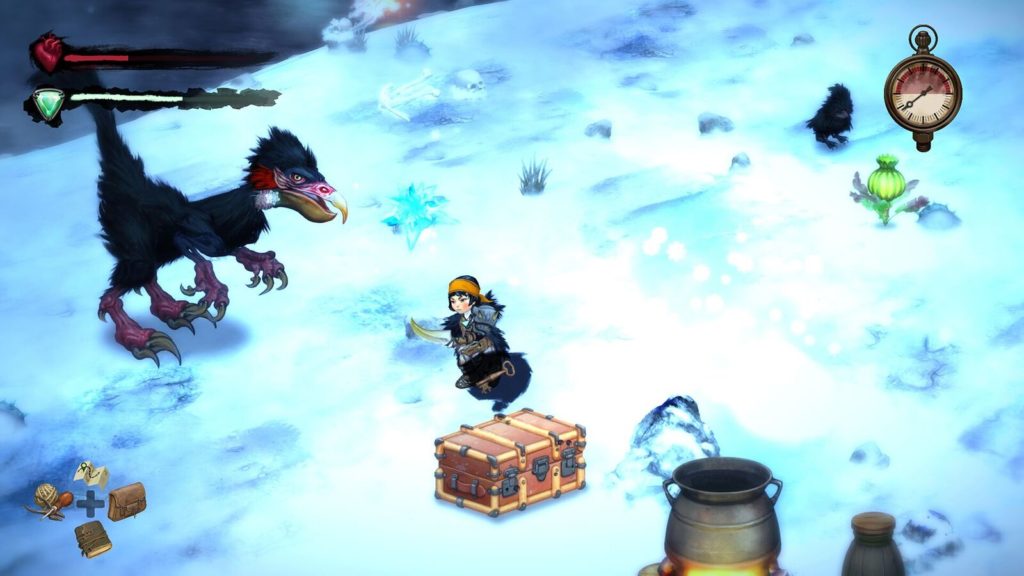
Look, I’ll be the first to admit that I’m not the brightest lighthouse on the coast, and I generally like my games fast and simple. But, had I taken the time from the outset to pay attention to the background environment, I probably wouldn’t have died 20 something times before making any significant progress in my first play-through.
Without the player ever being involved, the ecosystem of this world carries on with it’s bad self. Polyps (little jellyfish enemies) mate and produce offspring, plants swallow glowbugs and emit protective light, anglermoles eat fireflies and belch flames at you. Why does any of this matter?
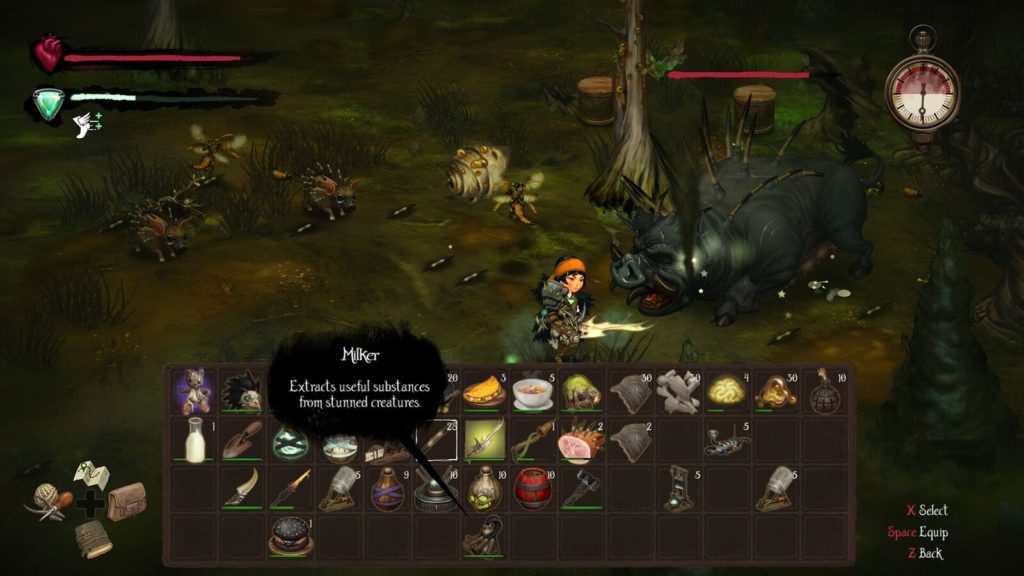
Actual transcript of this fight: F***. This game is hard… No wait, I got it… Nevermind, I’m dead again.
See that monstrosity in the picture up there? That was the first big enemy I was tasked to kill. And how many times did he annihilate me instead? An embarrassing amount. It wasn’t until I accidentally brought him too close to that wasp nest that the coin finally dropped. The wasps killed the boar, I killed the wasps, and I then applied that lesson to every other big-bad in the game. Paying attention to the environmental interactions are the key from taking Smoke and Sacrifice from impossibly frustrating to an enjoyable experience.
Even the sound design is amazing. Flapping insect wings, gnashing teeth, screen rumbling explosions, and prosaic music all contribute to a perfect symphony to accompany you on your quest.
Of course, no game is without its flaws. However, in this particular case, for Smoke and Sacrifice they are few and far between. Sometimes items you try to pick up are inaccessible because of the placement of permanent objects and how items drop. Also there’s… um… well, actually, that’s about the only bug I found. Other than the wasps.
Fans of diesel-punk, the crafting elements of Ark, and games like Penny Arcade’s On the Rain Slick Precipice of Darkness should definitely give this one a go. From perfect visuals and incredible audio, not a tedious amount of grinding, Smoke and Shadow is a visually perfect game with incredible audio and a plot that gave me actual nightmares. I cannot wait to play more.
PS: SAVE.
PPS: SAVE OFTEN.
Editor’s Note: This review was written in conjunction with Jon Calise, a contributor to Sub Cultured. You can find more of his writing on his personal blog, Petting Zoo Rejects.
Prepare to plunder or walk the plank in this brand-new, hilarious Adventure Time story, Adventure Time: Pirates of the Enchiridion!
Gamers play as Finn, Jake, Marceline, and BMO to explore fan-favourite kingdoms, and meet the well-loved characters from Cartoon Network’s popular TV animation series.
The game starts with a flooded Land of Ooo, in which familiar kingdoms are cut off from each other by rising waters. In their newly constructed boat (hold that thought*) Finn and Jake set sail to investigate what the junk went down.
During their adventures Finn and Jake will recruit friends to join their crew, jump into swashbuckling fights, interrogate characters for clues, and traverse the new and dangerous sea to locations across Ooo.
Adventure Time: Pirates of the Enchiridion is slated for release on PlayStation®4, Xbox One™, Nintendo Switch™ and PC, launching in the spring of 2018.
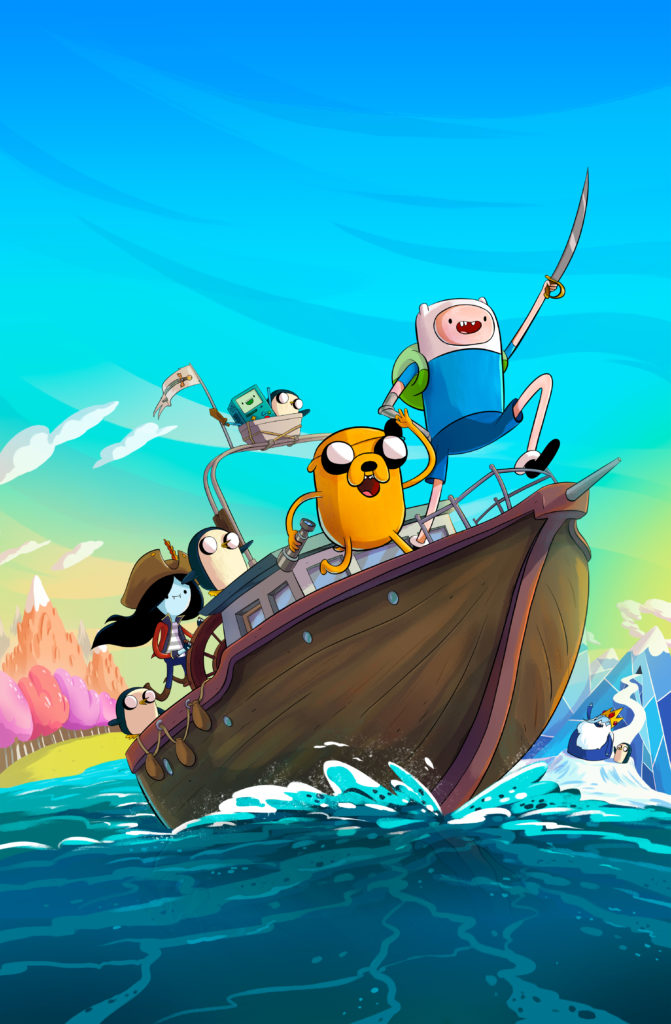
Looking for a new spooky game?
Just in time for the Halloween season, Bigmoon Entertainment and Camel 101 announced today that their new space survival horror title, Syndrome, is available on select systems. Syndrome traps players aboard a desolate scientific spaceship full of terrifying monstrosities creeping around every corner, with only stealth and evasion to trust while they unravel the deep mystery surrounding the deaths of fellow crewmen. Check out the release trailer below!
“It’s been a truly long-awaited milestone to bring Syndrome to console players, and we are excited to offer the game on virtual reality platforms as well”, said Paulo J. Games, Game Director of Bigmoon Entertainment. “With VR, the sinister atmosphere and blood-curdling suspense is as real as it gets. We can’t wait to hear the feedback from players and hope that it was worth the wait.”
Syndrome takes the horror genre back to its terrifying roots as players wake up on a deserted and adrift spaceship, dazed and confused from a deep cryosleep, only to discover that most of the crew are dead, or… changed. In order to survive the horrors that lurk in the shadows, players must explore the eerie confines of the ship in search of the last few weapons aboard, moving as stealthily as possible to evade direct enemy combat. Amidst numerous reactive adversaries awaiting close by, players interact with keypads and computer consoles to find clues as to what happened aboard and how to escape the deadly syndrome alive.
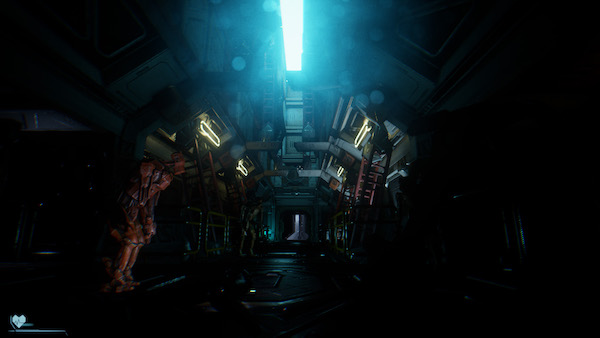
After completing the first chapter of the main “Story” mode, players can unlock an Endless Survival game mode specifically created to experience Syndrome in Virtual Reality. In the Endless Survival mode, players are trapped in a part of the spaceship where they scavenge surroundings for weapons and supplies, facing wave after wave of enemies set on destroying and dismembering everything in sight.
Syndrome has been nominated for several awards, including AMG’s Best Graphics Award and Reboot Develop’s Best Indie Award. Syndrome is now available on Sony Playstation 4 and PC with a game mode compatible for PS VR, HTC Vive and Oculus Rift.
Find out more about Syndrome at their Official Website!
Rendered to look like a living, breathing comic book, Telltale’s vision of Batman features an award-winning cast of talent, including Troy Baker, who returns to reprise his role as Bruce Wayne, as well as Anthony Ingruber, who reprises his fresh take on John Doe, better known to fans as The Joker.
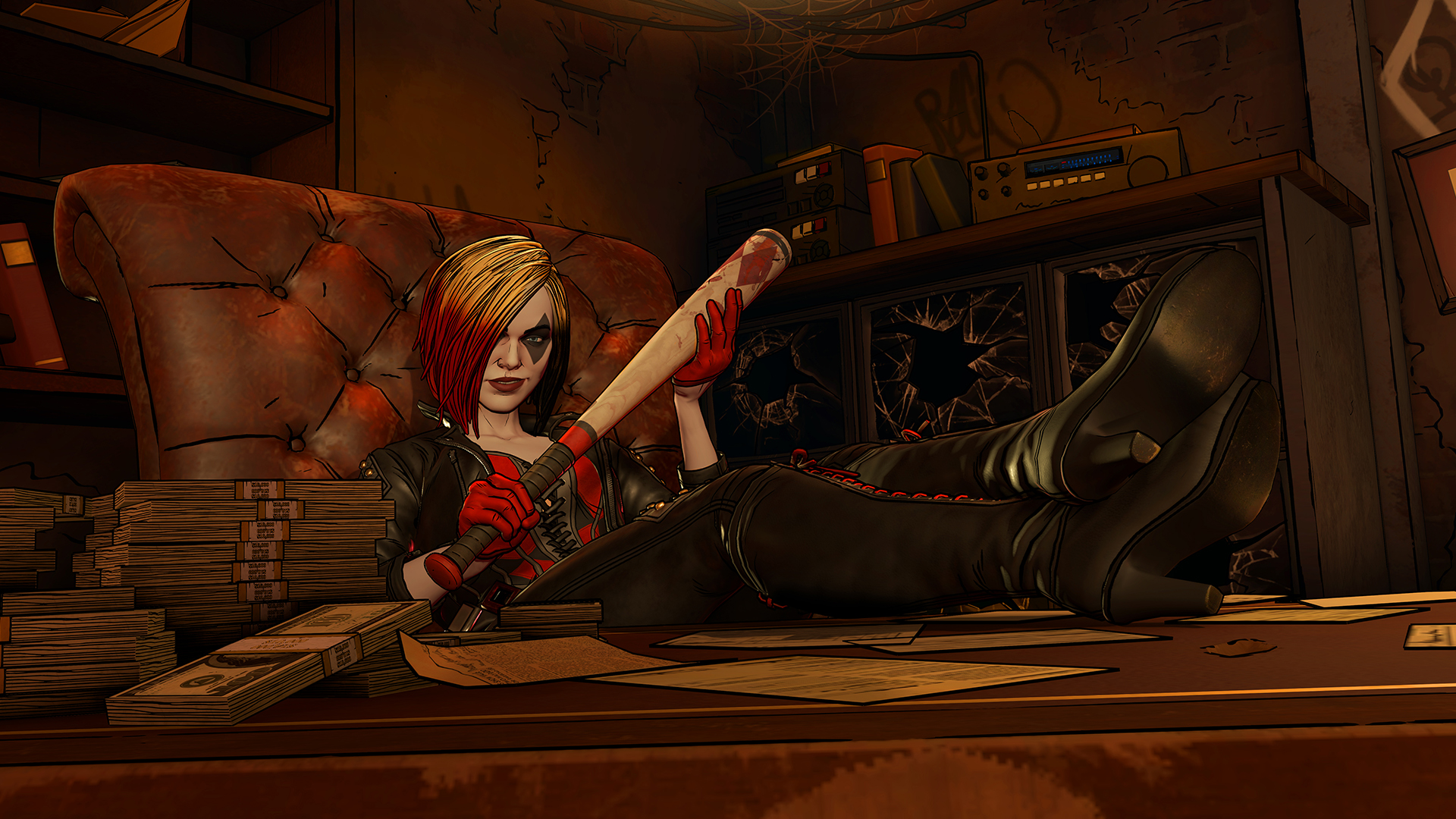
This new season will be accessible to both returning fans and newcomers alike, though players’ choices from the first season of Batman: The Telltale Series will optionally carry over into The Enemy Within. This season will also include Telltale’s unique multiplayer ‘Crowd Play’ feature, which allows friends and family to engage with the adventure together by helping to decide the direction of the story from any mobile device with an online connection.
Batman: The Enemy Within is a standalone product separate from the first season of Batman – The Telltale Series.
It will be available at retailers across North America on October 3 on a special ‘Season Pass Disc’ for Xbox One and PlayStation 4. The disc will include the first episode of the season, as well as access to download all subsequent episodes through an online connection as the episodes are released.
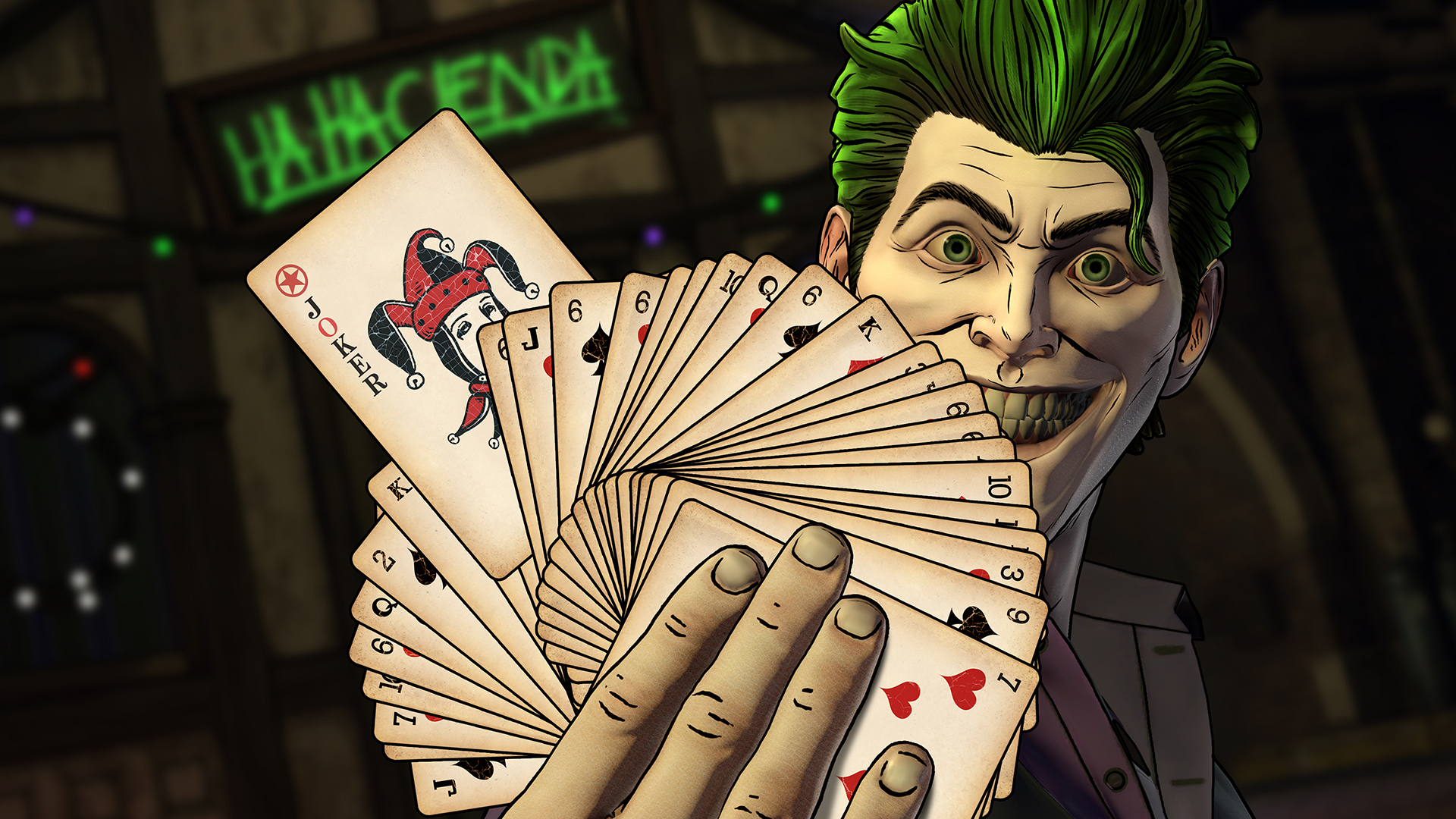
For more information on Telltale Games, visit the official website, follow @TelltaleGames on Twitter, and like Telltale on Facebook.














